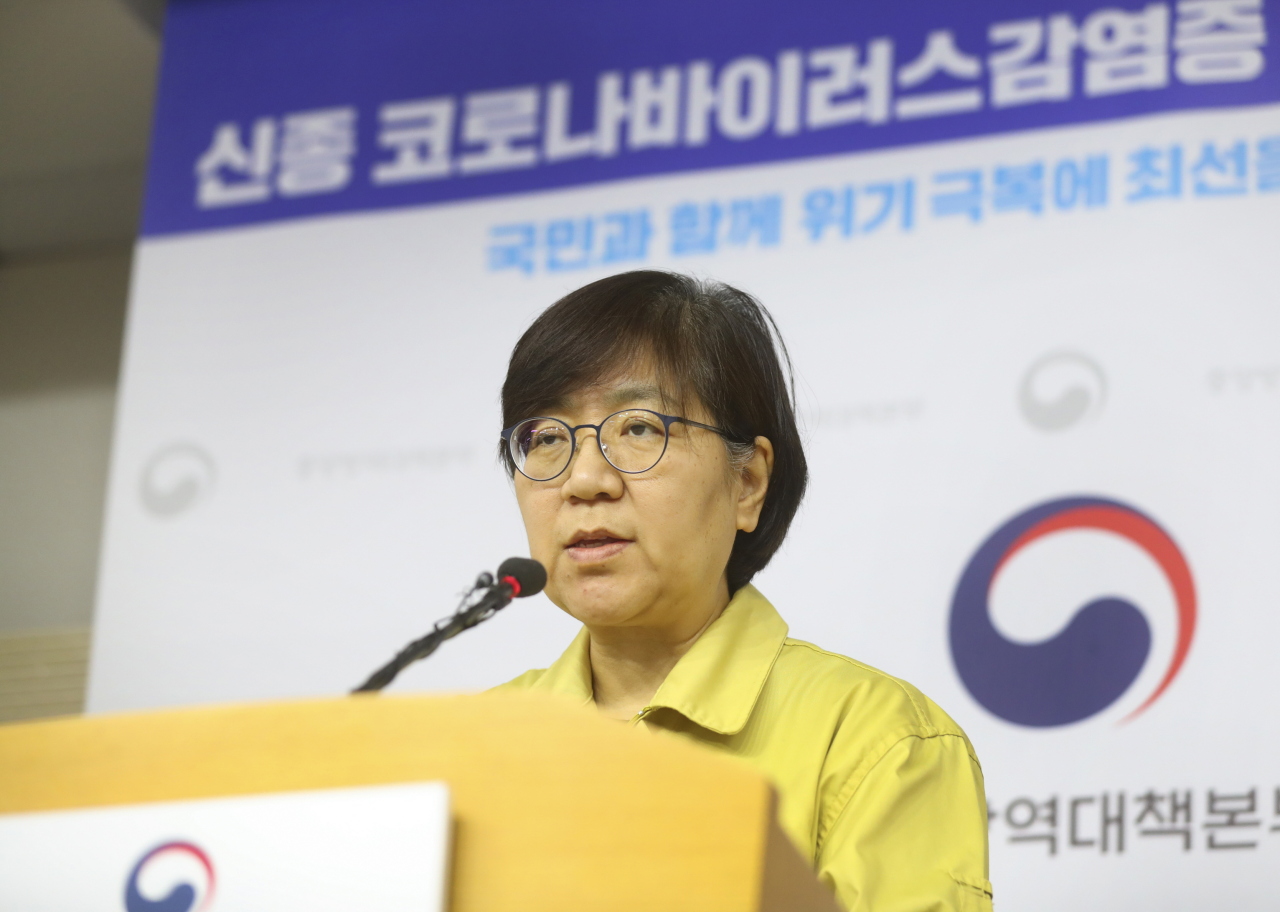Second wave of coronavirus already here: KCDC chief
Seoul could be Korea’s next coronavirus epicenter
By Kim ArinPublished : June 22, 2020 - 10:26

A second wave of the novel coronavirus has already hit South Korea, with Seoul as the epicenter, according to Korea Centers for Disease Control and Prevention Director Jung Eun-kyeong.
“If a wave is defined as an explosion of infections that significantly strains the health care system, I believe a second wave is in progress in the Greater Seoul area,” she said in a Monday briefing.
The KCDC chief said the rise in cases appears to have stemmed from an increase in movements during the holiday weekend in early May.
“As long as close contact amongst people continues to take place, the coronavirus trends in and around Seoul have the makings of the next big wave,” she said, warning that in the absence of physical distancing, the second rush of the coronavirus may arrive sooner than the previously anticipated fall or winter.
“The aim is to keep the speed and size of the outbreaks below our capacity and minimize damages until there is a cure or vaccine,” she said, urging yet again, compliance to physical distancing.
So far in the month of June, the patient count in the Seoul area stands at 788, having already exceeded May’s 505 and April’s 412, growing at an average of 38 a day.
Nearly half of the new patients confirmed last week were in their 50s or older, making severe outcomes more common. The number of severely or critically ill patients rose from eight on June 2 to 34 by Saturday, according to the Health Ministry.
The National Medical Center’s central clinical committee for emerging infectious diseases has warned of an impending intensive care unit bed shortage in the capital, where the number of patients has surged most.
“We worry that densely populated Seoul may be facing explosive and concentrated outbreaks,” the state-run hospital’s Director Chung Ki-hyun told reporters Sunday.
Addressing the NMC’s concerns, Yoon Tae-ho, the public health policy director at the Ministry of Health and Welfare, said in a Monday briefing that patients with no or mild symptoms would be housed at care facilities instead of hospitals. There are four such facilities in operation nationwide, with one more to be installed this week, he said.
Yoon said the government was also seeking solutions such as flexible work shifts for health workers on the frontline to alleviate the “COVID-19 burden.” In addition, surgical gowns which are lighter and more heat-friendly will be distributed at testing centers around the country for the months of summer, he said.
Minister of Health Park Neung-hoo, speaking at a meeting at the Central Disaster Management Headquarters on Monday, said the recent uptick in the number of imported cases called for amplified border checks. The number of cases linked to overseas travel almost doubled to 90 during the week of June 15-21, from 48 the week prior.
“The disease control authorities are having to fight local outbreaks while at the same time monitoring potential infections coming in from outside the country,” he said.
In response, the government said visa applications will be restricted for people from Pakistan and Bangladesh starting Tuesday, as a high proportion of passengers flying in from those countries been found infected.
Korea added 17 cases of COVID-19 in the 24 hours ending Sunday at midnight, according to the KCDC’s daily situation report.
Eleven of those were locally transmitted -- seven in the Greater Seoul, two in South Chungcheong Province, and one each in North Jeolla Province and Daegu. The remaining six cases were imported.
To date, there have been 12,438 coronavirus patients here, of whom 280 have died.
By Kim Arin (arin@heraldcorp.com)



















![[Today’s K-pop] Treasure to publish magazine for debut anniversary](http://res.heraldm.com/phpwas/restmb_idxmake.php?idx=642&simg=/content/image/2024/07/26/20240726050551_0.jpg&u=)